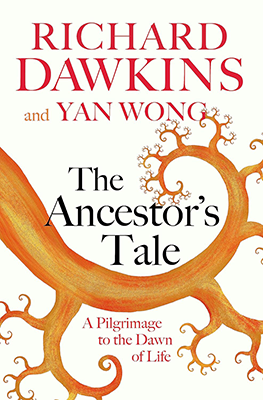The Ancestor’s Tale
“The Ancestor’s Tale: A Pilgrimage to the Dawn of Evolution” is a book written by Richard Dawkins, published in 2004. In this ambitious work, Dawkins takes readers on a journey through evolutionary history, retracing the path of human ancestry back through time to the origins of life on Earth.
The structure of the book is modeled after Chaucer’s “The Canterbury Tales,” with Dawkins imagining a pilgrimage of various species back to their common ancestors. Each chapter of the book corresponds to a different “rendezvous” point on this pilgrimage, where humans meet with their evolutionary relatives, such as chimpanzees, birds, fish, and even bacteria.
As the pilgrimage progresses, Dawkins explores key evolutionary concepts and milestones, including natural selection, speciation, convergent evolution, and the origins of complex traits such as eyesight and flight. He also discusses the latest scientific research and discoveries in fields such as paleontology, genetics, and molecular biology, providing readers with a comprehensive overview of evolutionary science.
Throughout “The Ancestor’s Tale,” Dawkins emphasizes the interconnectedness of all life forms and the continuity of the evolutionary process. He challenges readers to appreciate the vastness of geological time and the profound implications of Darwin’s theory of evolution for our understanding of life on Earth.
With its engaging narrative style, rich scientific detail, and thought-provoking insights, “The Ancestor’s Tale” is a captivating exploration of the history of life and our place within it. It serves as both a celebration of the diversity of life and a powerful testament to the beauty and wonder of evolution.

